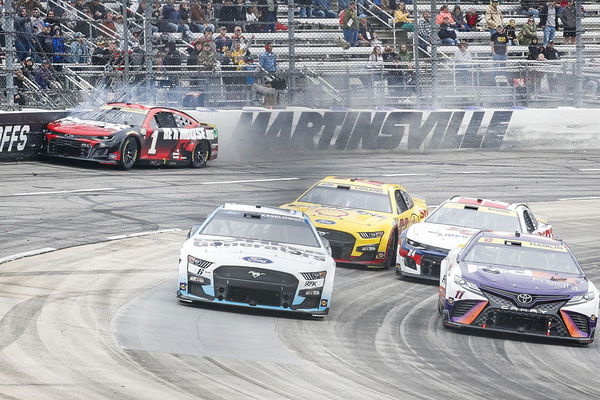

“I’m just gonna put my foot on the floor and go until I see God or the checkered flag.” That was Ross Chastain’s mindset when he pulled off one of the most legendary moves in NASCAR history during the Martinsville race in 2022. It was as if someone had duplicated a video game move and brought it to life during a live race.
While the half-mile oval at Martinsville is never far from controversy, back in 2022, Chastain did the unthinkable in what was a do-or-die situation. On the final lap, with his Championship 4 hopes slipping away, Chastain made a bold, video-game-style move. He floored the throttle, pinned his No. 1 Chevrolet Camaro to the wall, and rocketed past five cars in one of the most unbelievable moments in NASCAR history.
It was spectacular. It was effective. And now, it’s banned. In 2023, NASCAR ruled that any attempt to wall-ride would result in a time penalty, citing safety concerns. They argue that allowing such moves would open the door to chaos and serious accidents. But was the ban justified, or did NASCAR officials overreact? Let’s break it down.
ADVERTISEMENT
Article continues below this ad
How did Ross Chastain execute Carl Edwards’s unfinished plan?
First, let’s address the obvious, i.e. safety. NASCAR cited Section 10.5.2.6.A of the rulebook, which allows officials to penalize unsafe moves. They argue that Chastain’s wall ride posed a serious risk, not only to him but to the entire field. If his car had caught a gate opening or a protruding wall section, it could have resulted in a catastrophic crash. Notably, the sport has learned hard lessons about safety. Moreover, there’s also the risk of debris from the car flying into the grandstands and injuring the fans watching the event.
Dale Earnhardt Sr.’s tragic crash at Daytona in 2001 led to sweeping safety changes in the sport. NASCAR implemented the HANS device and SAFER barriers and redesigned the car to ensure the safety of the drivers. The introduction of the Next Gen car was another step in making racing safer. The problem with Chastain’s move was that it introduced unpredictability. What if other drivers copied it? What if a car hit the wall at the wrong angle and shot back into traffic?
Three-time Cup Series champion Joey Logano had admitted the move was “awesome” but warned that if NASCAR didn’t ban it, every driver would start doing it on the final lap at short tracks. “At some point, it won’t work, and it’s gonna be really bad,” Logano had said. Chastain himself admitted the move felt like a “prolonged crash” and that he wouldn’t try it again. But this was not the first time when someone had attempted such a move.

via Imago
NASHVILLE, TN – JUNE 25: Ross Chastain 1 TrackHouse Racing Worldwide Express Chevrolet waves to the fans during driver introductions prior to the running of the NASCAR, Motorsport, USA Cup Series Ally 400 on June 25, 2023 at Nashville SuperSpeedway in Lebanon, TN. Photo by Jeff Robinson/Icon Sportswire AUTO: JUN 25 NASCAR Cup Series Ally 400 EDITORIAL USE ONLY Icon2306257180400
In 2008, NASCAR Hall of Famer Carl Edwards attempted a similar move at Kansas Speedway. On the final lap of the race, Edwards attempted a daring move on Turn 3 to pass Jimmie Johnson. He aggressively hit the wall to maintain speed—a tactic reminiscent of strategies employed in racing video games. However, upon contact, the wall significantly reduced his momentum, allowing Johnson to retain the lead and secure the victory.
What’s your perspective on:
Did NASCAR kill innovation by banning Chastain's legendary wall-ride, or was it a safety necessity?
Have an interesting take?
“I planned on hitting the wall, but I didn’t plan on the wall slow me down that much. Played a lot of video games where you can just run it into the wall and hold it wide open. And that’s what I did, and it didn’t quite work out the same as the video game.” Edwards said this in the post-race interview. But despite the ban on the hail-melon, drivers still tried their luck, and last year’s race manipulation race led to a similar incident.
Notably, last year at the Martinsville race, Joe Gibbs Racing driver Christopher Bell made slight contact with the wall at Martinsville while trying to gain spots. NASCAR immediately penalized him, ending his title hopes. Bell argued he wasn’t deliberately wall-riding, but the officials didn’t hesitate to enforce the rule. So, from a safety standpoint, NASCAR’s decision makes sense. They want to eliminate gray areas before someone gets hurt. Well, at the time it looked as if NASCAR threw Bell under the bus as they couldn’t make a ruling on the culprits involved in manipulation tactics.
But here’s where things get tricky. NASCAR may have banned the move, but they sure didn’t hesitate to capitalize on it. NASCAR heavily featured the “Hail Melon” in promotional materials, highlight reels, and commercials hyping up the 2023 season. If it was such a dangerous move, why was NASCAR using it to sell tickets? Some also argued that in 2021, when Kyle Larson attempted similar moves, he didn’t receive any penalty. But he was onboard with NASCAR’s idea to ban the wall ride, “I don’t think it would be good to see it happen every week. Making a call on it is good, and we won’t see it anymore, so it’s nice.”
It’s not a one-off case; look at NASCAR’s stance on the fights between the drivers. Remember Ricky Stenhouse Jr. was fined $75,00 fine for punching Kyle Busch after the All-star race at North Wilkesboro Speedway. The irony is that they used it as promotional material throughout the next week on social media and web pages. So, when it came to the wall ride by Christopher Bell, it was almost given that NASCAR would cancel his move, and that is what happened.
Trending
ADVERTISEMENT
Article continues below this ad
Did NASCAR have any other option?
NASCAR has always been a sport of ingenuity. Drivers and teams constantly look for ways to gain an edge. Whether it’s aerodynamics, pit strategy, or drafting techniques, creativity has played a huge role in shaping the sport. Ross Chastain’s wall ride was a prime example of a driver thinking outside the box. It wasn’t illegal at the time, and it worked within the rules. The fact that it was inspired by a video game just made it even more legendary.
However, NASCAR’s decision to ban it outright stifles that kind of innovation. Some fans and analysts argue that instead of banning the move, NASCAR should have worked on refining track safety. Could they have introduced softer walls to prevent dangerous impacts? Could they have set clearer guidelines on when a move like this crosses the line? Instead, they took the simplest route—ban it completely.
There’s no denying the risks of wall-riding. Chastain’s move was breathtaking, but it could have gone horribly wrong. NASCAR was within its rights to address the safety concerns. However, outright banning the maneuver—while still using it for promotion—feels inconsistent. A better approach would have been to regulate the move instead of eliminating it. However, Chastain’s “Hail Melon” will go down as one of the most insane moments in NASCAR history.
ADVERTISEMENT
Article continues below this ad
Now that the NASCAR circus is headed back to Martinsville this weekend, it will be interesting to see if the track delivers more dramatic storylines and topics.
ADVERTISEMENT
ADVERTISEMENT
ADVERTISEMENT
ADVERTISEMENT


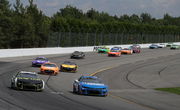
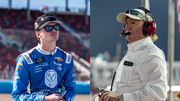

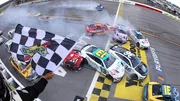
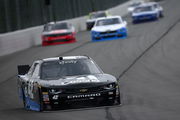
Did NASCAR kill innovation by banning Chastain's legendary wall-ride, or was it a safety necessity?